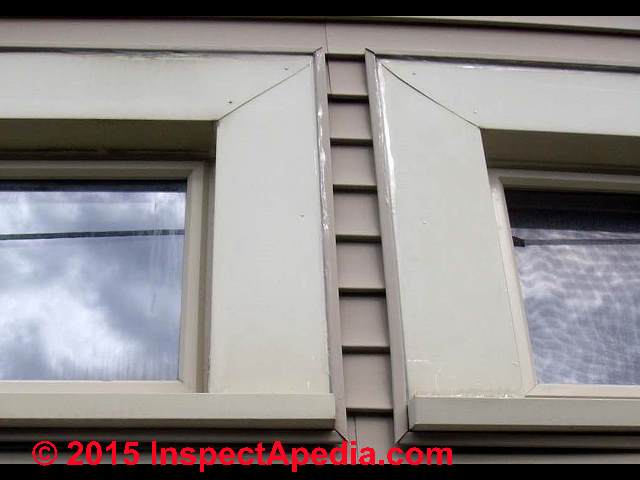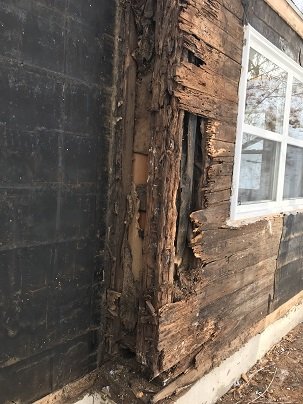A water leak developed that will require replacing insulation ceiling and wall board replacement wallpaper and carpet cleaning my question is should the roofer or his insurance be responsible for the cost of these repairs the roofer is recommended by you.
Interior drywall damage due to leak from damaged siding.
Fixing water damaged drywall is necessary not only because it looks terrible but because the drywall will not hold up due to it being weakened and can even be dangerous to your health.
Termites can destroy wood siding although they won t touch hardieplank or vinyl siding.
So if this happens you will need to remove or replace the siding quickly before rot sets in.
Rot or mold if moisture is able to enter through your siding it has failed.
In many cases however replacement is indicated.
This article describes the discovery of both active and prior leaks through a building s walls or windows and the steps that were taken to evaluate the impact of the leaks on the structure to track down the leak sources and to fix the problem both in stop gap mode due to weather and time constraints and as final.
Building siding window or wall leak detection diagnosis repair procedures.
Under certain limited circumstances drywall can be retained after water damage.
Water damage is a common reason for drywall replacement in homes.
The key is to minimize the amount of water that saturates the drywall.
To do this cut a rectangular piece from a new piece of drywall and bevel the edges at a 45 degree angle.
If it s solid you may just have to repaint and not replace drywall.
If a new roof develops a leak is the roofer liable for interior damage a new roof system was installed october 2013.
Water can also seep in behind faux stone and other external walls around your home.
Your siding may need to be replaced if rodents or other pests have been able to find their way in and live between your interior walls and exterior siding.
Remove the drywall immediately so that it doesn t start to grow mold.
Hidden water leaks are dangerous because they can cause serious issues like structural damage and mold growth before they are discovered.
If the bulges in your drywall caused by water or improper fastening are less than 8 inches in size you may be able to repair the problem by replacing only the area that is damaged.
Replace the drywall and be sure that it has countersunk 1 16th of an inch.
Prick the large blister and let all water drain out.
Here the biggest danger is water seeping in behind your siding and causing permanent damage to more vulnerable materials.
Excess water and moisture gets absorbed in wood drywall insulation and wallpaper which can lead to warping stains bubbling and deterioration.
The day after the leak do the test with your finger to see how stiff the drywall is.





























